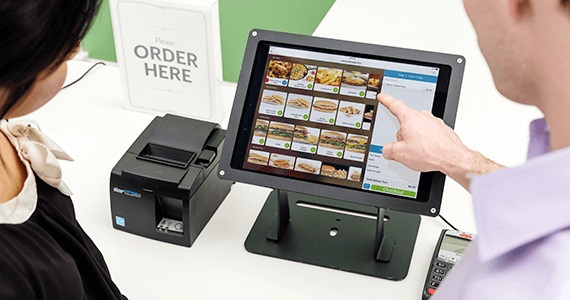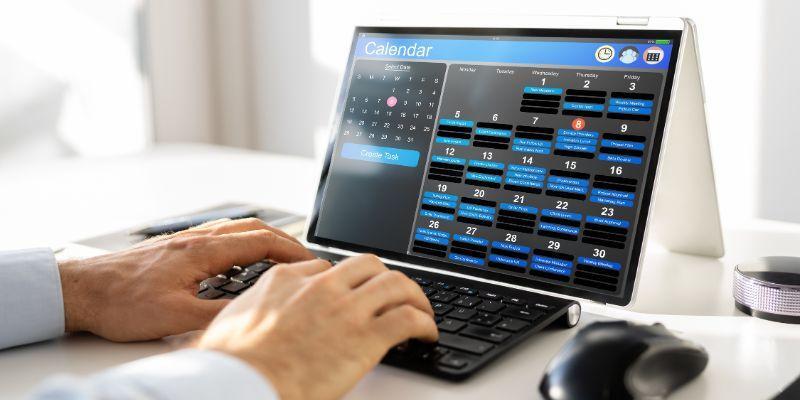Effective customer onboarding is the foundation of business success, impacting customer retention and satisfaction. According to recent stats, businesses with robust onboarding processes witness a 200% increase in customer retention.
First impressions matter; a well-crafted onboarding experience sets the tone for long-term relationships. 86% of customers are likelier to stay loyal to a brand with a seamless onboarding journey.
Today, we will dive into the significance of customer onboarding, exploring best practices that highlight their direct correlation to customer loyalty and overall business growth.
Let’s unravel the essential strategies that turn onboarding into a powerful tool for fostering lasting connections and enhancing customer satisfaction.
What Is Customer Onboarding?
Customer onboarding is the pivotal process of integrating new users into a product or service, setting the stage for a positive customer experience, and paving the way for long-term customer success.
It encompasses the systematic and strategic steps a business takes to guide users through the initial stages of their interaction with a product or service. A well-executed customer onboarding process is vital for establishing a solid foundation for customer success.
By addressing users’ needs, providing valuable resources, and ensuring a smooth transition, businesses enhance the overall customer experience and increase the likelihood of sustained satisfaction and loyalty.
Customer onboarding is the critical link between acquisition and customer success, shaping the journey for optimal long-term engagement.
Key Components of Customer Onboarding

Embarking on a successful customer onboarding process involves a strategic interplay of critical components and adhering to customer onboarding best practices.
This process is not merely a checklist; it’s a dynamic engagement that begins with a thorough understanding of users’ needs and expectations.
From personalized welcome communications to intuitive product demonstrations, each step contributes to a seamless onboarding experience.
By embracing customer onboarding best practices, businesses can foster trust, drive user adoption, and lay the groundwork for sustained satisfaction, ensuring customers stay onboard and thrive in their engagement with the product or service.
1. Initial Contact and Welcome
In client onboarding best practices, the initial contact and welcome stage are pivotal in shaping the entire experience. This crucial phase sets the tone for the relationship, and incorporating digital signage can enhance the process.
From personalized welcome messages to informative displays, digital signage creates a dynamic and engaging introduction. It imparts essential information and showcases a commitment to modern, efficient practices.
Leveraging digital signage in the initial contact ensures a seamless transition into the client onboarding journey, providing a visually impactful and informative welcome that aligns with contemporary best practices.
2. Information Gathering
In the customer onboarding process, effective information gathering is a cornerstone of a well-designed customer onboarding strategy.
Thoughtful consideration of customer onboarding process examples reveals that this stage is not merely about collecting data but creating a tailored experience.
Businesses can personalize interactions, anticipate challenges, and proactively address concerns by employing a customer onboarding strategy that emphasizes understanding individual needs and focuses on customer feedback.
As demonstrated in successful customer onboarding process examples, this proactive approach streamlines the onboarding journey and sets the stage for a lasting and positive customer relationship.
3. Clear Communication
Clear communication stands at the forefront of why customer onboarding is essential and integral to effective new customer onboarding strategies.
This communication extends beyond conveying information; it involves active listening to customers. Businesses foster trust and satisfaction by prioritizing open dialogue and understanding customer needs during onboarding.
Successful customer onboarding hinges on this two-way communication, ensuring that information is shared, received, and acknowledged, creating a foundation for a positive and enduring customer relationship.
6 Best Practices in Customer Onboarding

Navigating the domain of customer onboarding requires a roadmap of best practices that prioritize user satisfaction and long-term engagement. The key lies in crafting a seamless process from personalized welcomes to intuitive guidance.
Successful onboarding is not just a process; it’s a strategic approach that understands and addresses individual needs. By embracing these best practices, businesses create a foundation for enduring customer relationships and set the stage for continued success.
- Seamless Onboarding Processes
- Reduce Long Wait Queues
- Personalization
- Proactive Support
- Self Service Transactions
- Implement a Ticket Counter System
1. Seamless Onboarding Processes
Crafting a seamless onboarding experience hinges on a well-designed new customer onboarding process. This strategic approach coordinates each step precisely, ensuring a smooth transition from introduction to integration.
From personalized welcomes to innate direction, the new customer onboarding process is a dynamic journey that prioritizes user satisfaction.
By streamlining procedures and anticipating user needs, businesses can create a positive first impression, fostering trust and building the hype for a lasting relationship beyond initial interactions.
2. Reduce Long Wait Queues
Bid farewell to endless waits and frustrating queues with the implementation of a sophisticated customer queuing system. This innovative solution streamlines the entire process, efficiently organizing and directing individuals and making customer onboarding a more leisurely cycle.
No more chaotic lines: envision a system that optimizes wait times for a smoother customer experience. Whether in retail, offices, or service centers, the queue management system solves long lines, transforming the waiting experience into a well-organized, stress-free process.
Embrace the efficiency and convenience of a virtual queue solution, ensuring a quicker, more pleasant encounter for everyone involved. A queue management system enhances the experience, making the process smoother and more streamlined.
3. Personalization
Elevate your customer interactions through the power of personalization with customer experience solutions. Tailoring your approach to individual preferences and needs, these solutions create a unique and memorable journey for every customer.
From personalized recommendations to customized communication, the integration of custom experience solutions ensures that each interaction resonates on a personal level.
This fosters a deeper connection between the brand and the customer and enhances overall satisfaction via a smoother customer onboarding process.
4. Proactive Support
Regarding customer onboarding best practices, proactive support stands out as a basis. Beyond providing information during onboarding, integrating proactive support channels anticipates user needs.
Timely assistance and guidance become proactive elements, ensuring a seamless onboarding journey. Businesses address immediate concerns and fortify customer confidence by strategically incorporating customer support channels within the onboarding process.
This proactive approach transforms onboarding into a dynamic experience, enhancing customer satisfaction and adding the foundation for enduring relationships built on trust and attentive support.
5. Self Service Transactions
Revolutionize your customer onboarding strategy with self-service kiosks, empowering users to navigate transactions independently. These intuitive kiosks streamline processes, allowing customers to efficiently input information and complete essential steps.
Incorporating self-service transactions into your customer onboarding strategy enhances efficiency and gives users a sense of control and convenience.
From registration to data input, these kiosks offer a seamless and user-friendly experience, fostering a positive first impression. Adopt the future of customer onboarding by leveraging self-service kiosks to create a more interactive and efficient journey for your users.
6. Implement a Ticket Counter System
Revamp your approach to onboarding new customers by implementing a ticket counter system. Integrate a user-friendly ticket dispenser to facilitate a smooth and organized onboarding process.
This strategic move ensures a structured flow and enhances customer experience. Beyond its functionality, it incorporates people counting technology to monitor and manage crowd density effectively.
By adopting a ticket counter system, businesses streamline the onboarding journey and prioritize customer convenience. This ensures a seamless and controlled environment for new customers as they interact with your services.
Examples of Successful Customer Onboarding
1. Transformative Impact: Optimizing Saudi Business Center’s Customer Onboarding
Wavetec’s customer onboarding solutions revolutionized the Saudi Business Center’s workflow, serving 23,120 customers monthly.
Leveraging dual printers, LCDs, and real-time feedback systems, Wavetec streamlined processes, reducing wait times and enhancing customer satisfaction.
The impact was transformative, from WhatsApp Queues for remote joining to comprehensive dashboards for management insights.
Wavetec’s solutions reduced waiting time and elevated branch performance and employee productivity. The success story continues, with plans to deploy these cutting-edge onboarding solutions across all Saudi Business Center branches.
2. Elevating Customer Onboarding: Telcel Mexico’s Success Story with Wavetec
Telcel, a telecommunications leader, sought to enhance customer onboarding by reducing wait times. Wavetec’s queuing solution, integrated into 30 service centers, streamlined the process, featuring personalized screens and intuitive flows.
This innovation significantly reduced waiting times, fostering an improved customer onboarding experience. Telcel’s journey, once marked by complexity, now showcases the transformative impact of prioritizing customer onboarding.
Through their partnership with Wavetec, Telcel has set a new standard for excellence in customer onboarding within the telecommunications industry, emphasizing the power of innovation to create lasting customer satisfaction.
Critical Metrics for Measuring Customer Onboarding Success

Unlocking customer onboarding success requires tracking key metrics that tell the tale of user engagement and satisfaction.
From first interaction to product adoption, measuring success is essential. Let’s look into the pivotal metrics that gauge the effectiveness of your customer onboarding strategy.
1. Time to Value
The Time to Value metric measures the duration it takes for customers to derive tangible benefits from a product or service after initial onboarding, reflecting the efficiency of the onboarding process.
2. User Engagement
User Engagement, assessed through business analytics, gauges the level of interaction and involvement customers have with a product or service post-customer onboarding, indicating the effectiveness of the onboarding strategy in maintaining user interest.
3. Customer Satisfaction
Customer Satisfaction is a metric evaluating the contentment and positive sentiment of customers following the completion of the customer onboarding process, providing insights into the success of implemented best practices.
4. Retention Rates
Retention Rates measure the percentage of customers who continue using a product or service over time, serving as an outcome metric for the effectiveness of customer onboarding best practices in fostering long-term customer loyalty.
Importance of Iterative Improvement
In the context of customer onboarding, the importance of iterative improvement cannot be overstated. Regularly revisiting and refining the onboarding process enables businesses to adapt to changing customer expectations and industry trends.
This iterative approach allows for the incorporation of valuable feedback, ensuring that each onboarding experience becomes more seamless and tailored to customers’ evolving needs.
Feedback Loops
Talking about client onboarding best practices, implementing feedback loops is a game-changer. These loops create a continuous exchange of insights between clients and the onboarding process, allowing businesses to adapt and refine their strategies.
By actively seeking and incorporating client feedback, organizations can tailor their onboarding experiences, ensuring they align precisely with client expectations.
Continuous Training and Development
In navigating how to onboard new customers effectively, prioritizing continuous training and development is critical. This approach ensures staff and customers stay abreast of evolving processes and features.
By offering ongoing training initiatives, businesses empower their teams and users, fostering a culture of adaptability and proficiency.
This commitment to continuous learning enhances the onboarding experience and positions businesses to thrive in dynamic environments, providing a solid foundation for sustained success.
Challenges in Customer Onboarding

As experienced in the industry, customer onboarding comes with challenges. Navigating these hurdles is crucial for a seamless process.
From information overload to technology integration, understanding and addressing these challenges are pivotal in crafting an effective onboarding strategy.
1. Overcoming Resistance to Change
Overcoming resistance to change is integral to successful customer onboarding processes. Implementing customer onboarding best practices involves introducing new procedures and fostering a culture of adaptability.
Recognizing and addressing resistance ensures a smoother transition, facilitating customer success onboarding.
2. Managing High Customer Volume
Effectively managing high customer volume is a challenge within the customer onboarding process. Implementing streamlined practices and leveraging customer service statistics can help businesses optimize resources, ensuring efficient onboarding without compromising quality.
3. Adapting to Market Dynamics
Adapting to market dynamics is essential in crafting a resilient customer onboarding strategy. Regularly reassessing and adjusting practices based on evolving market conditions ensures the relevance and effectiveness of the onboarding process, contributing to long-term customer success.
Conclusion
As explored, customer onboarding is a dynamic and essential process that demands continual adaptation and refinement. As businesses navigate the complexities of onboarding, customer success becomes vital.
Overcoming challenges, embracing iterative improvement, and incorporating valuable feedback loops contribute to the evolution of effective customer onboarding strategies.
The seamless integration of new customers hinges on understanding their needs, providing clear communication, and fostering a personalized experience.
As markets evolve, businesses must remain agile, adjusting their onboarding processes to align with shifting dynamics.
Ultimately, a successful customer onboards a one-time event but has a continuous commitment to creating positive and lasting impressions, ensuring a foundation for sustained customer satisfaction and loyalty.
BOOK A FREE DEMO




